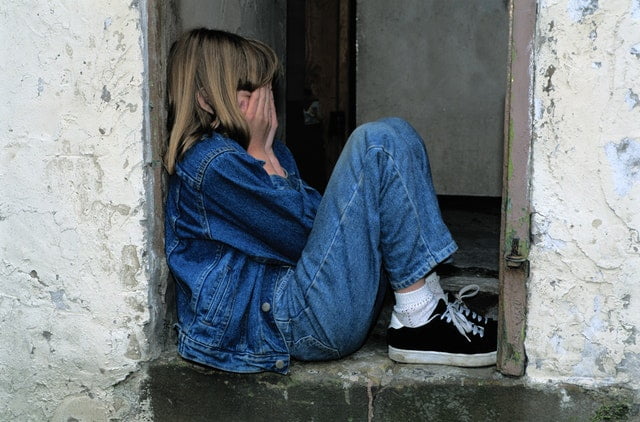The Reality of Missing Children in the UK
In the financial year 2015/16 children accounted for over 130,000 missing incidents reported to police nationwide. It is a certainty that thousands upon thousands more went unreported. Between 25-30% of young people who go missing are believed to be at risk of serious harm. There is no doubt that children who run away and go missing from care, home and education pose a major safeguarding issue for police, local authorities and safeguarding children boards. Let’s start with some stats:
- In the 2015/2016* police in the England, Wales and Scotland received over 382,000 contacts relating to missing or absent people.
- Over 249,000 people were recorded as missing of which 61% were people under 18*.
- Over 36,000 people were dealt with as Absent*.
- 96% of people were located or returned safely*.
- Approximately 79% of missing cases are resolved within 24 hours.
- 11% of young people said that they had been ‘hurt or harmed while away from home on the only or most recent occasion’ (Rees, 2011:16).
- 1 in 5 young people said that they had stolen, begged or done ‘other things’ whilst away in order to survive (Rees, 2011:16).
- Runaways are 9 times likelier to contemplate suicide than other children.
- 1 in 6 runaways are assumed to sleep rough; 1 in 8 resort to stealing to survive and 1 in 12 children are at serious risk of some form of abuse – The Children Society
- 60% of the unaccompanied migrant minors accommodated in UK social care settings go missing and are never found – British Asylum Screening Unit
*2015/2016 financial year
What is the definition of a missing child?
In November 2016 the College of Policing, produced a new Approved Professional Practice (APP) for Missing People. An APP is a document outlining best practice and guidance on specific areas of policing and this particular APP replaced and refreshed the previous guidance documents – ‘The Management, Recording and Investigation of Missing Persons 2010’ and the subsequent interim guidance in 2013. One of the major changes in the APP was to replace the previous meaning of missing with a completely new definition.
The previous definition:
‘anyone whose whereabouts cannot be established and where the circumstances are out of character or the context suggests the person may be subject of crime or at risk of harm to themselves or another’.
A second major change was to withdraw the category of ‘Absent’. This classification of a missing person had been introduced in 2013 and was defined as a ‘person not at a place where they are expected or required to be and there is no apparent risk’. Classifying a child as absent essentially meant that police took minimal proactive steps to locate the child. Instead police forces were required to continuously monitor and review the circumstances until the child’s return. Following much criticism by charities, Her Majesty’s Inspectorate of Constabulary (HMIC) and some MP’s, the new APP removed the absent classification and replaced it with one single new definition of missing:
‘Anyone whose whereabouts cannot be established will be considered as missing until located, and their well-being or otherwise confirmed’.
Please note: Some UK police forces have yet to adopt this new definition and still work to the 2010/2013 guidance.
What about children whose whereabouts are known but who are not where they are supposed to be?
A child whose whereabouts are known would not be treated as either ‘missing’ or ‘absent’ under the police definition. Police should not instigate a missing child investigation in these cases. However, this decision should be taken after obtaining sufficient information from the informant to assess the risk. Where there are real concerns that despite the child’s location being known, there are safeguarding issues, then police should carry out a ‘welfare check’ to ensure the wellbeing of the child and remove them to a place of safety if required.
A word on welfare checks. Each year police forces nationwide deal with thousands upon thousands of requests to carry out welfare checks on individuals – both adults and children. Most of these originate from either the health or social care sector. Here is the legal bit – believe it or not the police have no general responsibility for the safety or welfare of members of the public. That doesn’t seem, right does it? But it is correct. The legal bit says that police have responsibility for preventing and detecting crime, keeping the Queen’s peace and protecting life and property. If a welfare check falls into any of these categories then police have a duty to act on a request for assistance. However, where no such criteria exist, then the matter should remain the responsibility of the requesting agency. Simplified, this means that unless it is an emergency and there are real concerns that something serious is about to happen to an individual(s); or the individual inside the address needs immediate assistance because of a health condition, injury or some other life-threatening situation, then police have no power to enter the premises (see also powers of entry below). The test is “is the person in the address believed to be at risk from criminal acts of another person or do they need medical aid”? If the answer to this question is ‘yes’ then a police response will be necessary.
Who is responsible for finding missing children?
Police are the lead agency when a child is reported missing. Under Section 11 Children Act 2004 and the Human Rights Act the police have a statutory duty to safeguard and promote the welfare of young people. The European Convention on Human Rights (ECHR) also places a positive obligation on police to take reasonable action, within their powers, to safeguard the rights of individuals who may be at risk. Their primary responsibility is to prevent the child from coming to harm. This means that police are obligated to record the missing incident, assess the risk to the person and take positive action to ensure the welfare of individual. The best way of doing this is to ensure the child is located and establish whether there are any safeguarding concerns safeguarding.
What if the child is looked after by or known to Social Services?
The police will still be the lead agency for locating the child. However, Section 11 also applies to other agencies e.g. Social Care, Health, Education, UK Visas and Immigration etc. When a child goes missing there should be a multi-agency response from all the agencies involved with that individual child.
What if the child is wanted for a crime or by the court?
There will be occasions when a child is reported missing where they are also wanted, either by the police for a criminal offence; where they have absconded from lawful custody or a court has issued a warrant of arrest. In these situations, the Police should treat a child as both a missing and wanted person. A missing person report should be generated in all cases. However, the response will be on a case by case basis according to the individual risk assessment for both the child and the public. Where a child is wanted for a minor criminal matter and there are also increased risk factors, then it may be more appropriate to deal with them as a missing child rather than a wanted offender. This approach would apply even if the sole reason the child went missing is because they were aware that they were going to be arrested. Likewise, if the offence for which they are wanted is a serious crime and there is potentially a danger to the public, then it may be better to deal with them as a wanted person. Ultimately the main objective should be to bring the missing/wanted episode to a safe conclusion.
Many police forces have separate units to deal with missing persons and wanted offenders. Far too often lines become blurred as to what police team should take the lead. There have been cases where police supervisors assume that the other police team has the lead, or disputes arise over primacy, resulting in very little action taken to locate the child. It is vitally important that from the outset of the investigation that the lead police team is identified. Who has primacy and overall responsibility for assessing and reviewing risk, identifying and instigating actions? It may be that both the missing person unit and the wanted offenders team (names differ from force to force) both have a contribution to make. However, there should be no confusion around who has the lead and who is in charge. To those of you who are Social Workers, Carers and parents, we would say that when you have a young person who is missing but also wanted, make sure you identify who the lead police team are and who is the supervisory officer. Where it is not clear then our advice is to escalate your concerns through a police supervisor of at least Inspector rank to ensure that there is the correct police response.
What about Looked After Children (LAC) who are away from placement without authorisation?
This ‘sub category’ for want of a better word appears in many local authority missing children policies as well as the Department for Education ‘Statutory guidance on children who run away or go missing from home or care 2014’. Many children push barriers which is a part of growing up. Examples include where a child will be back late for a curfew or want to stay overnight at a friend’s. Some children do this continuously and whilst they are away from placement they would not be considered missing. However, the circumstances still need to be monitored and the carer or social worker should take reasonable steps to ascertain the wellbeing of the child. Where there is a concern the child may be at risk of harm to themselves or to others then police should be notified in order that appropriate safeguarding measures can be taken.
We know what your thinking – this doesn’t make sense! How does that fit in with the new definition of missing? The answer is that it doesn’t, and the new definition is incompatible with the current DfE guidance. Not that it matters that much because this sub-category is rarely used by social care or care providers. Regardless of the disparity in the guidance, the reality is that police forces are struggling to cope with the number of people reported missing. There needs to be a sensible approach to reporting children missing. Are they really missing or are they simply pushing boundaries?
What about the kid who goes to play football in the park very evening who has a 9pm curfew but is routinely an hour over his curfew time. Is he missing or simply not abiding with what he is required to do? What power do police have to make him return? The answer is – none. We have seen examples where a child from a care home refused to return to the care home. Is he missing? He might have been, but in this particular situation the child was standing across the road from the care home whilst the care home staff watched him from the office opposite. When their attempts to persuade him to return inside failed, they decided to report him missing to police even though they had him in view all the time. All safeguarding professionals have a shared responsibility to assess risk properly and take proportionate action.
What about children who are missing or not receiving education?
The police are not the lead agency for children who are not receiving education or children who truant from school. Police should only be notified where the definition of missing is met.
A child is deemed as not receiving suitable education if they are:
- of compulsory school age and not;
- on a school roll; and
- not receiving a suitable education elsewhere, (for example, at home, privately, or in alternative provision).
Children fail to attend school for a variety of reasons. Whilst often there can be a reasonable excuse for non-attendance, it can also be a sign that a child is at risk of harm. Forced marriage and female genital mutilation are specific safeguarding areas that have specific risk indicators linked to school absence. Non-attendance may also be due to physical abuse e.g. a parent or carer does not send a child to school to prevent professionals from seeing bruising, cuts, burns etc. Where there are no immediate safeguarding concerns it is the responsibility of the education authority to make enquiries to ascertain the child’s circumstances.
Likewise, truanting is also something that would not ordinarily be reported to the police in the first instance. A truanting child is not a missing child although this can quickly change dependent on circumstances. Again, this is incompatible with the actual definition of ‘missing’ but truanting is specifically covered within the APP. Police would only become involved where the definition of missing was satisfied or there were other safeguarding concerns for the child. If there is any doubt as to whether a child is truanting or missing, then the default position would be to report the circumstances to the police so that the risk can be assessed.
Reporting all truanting cases to the police would bring an already buckling system crashing down by placing an impossible burden upon police. However, this is a tricky one for professionals in Education. Whilst many children truant for a variety of fairly innocent reasons, unauthorised absences for some children, may well be an indicator of risk. There have been cases where children have truanted from school and have then been returned by the exploiter before the end of the school day. It is for education professionals to adopt a sensible and risk based approach and if safeguarding concerns are identified then a referral through the agreed local authority pathway should be made. Where there is an immediate risk of harm then the child should be reported as missing.










